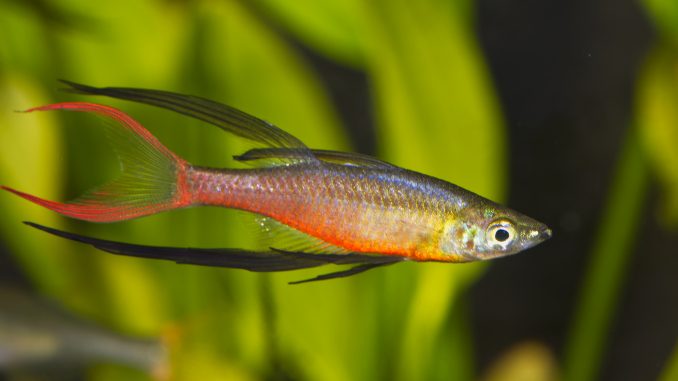
Rainbowfish are small freshwater fish belonging to the Melanotaeniidae family. There are currently over 50 documented types of rainbowfish in the world. Most rainbowfish are found in Australia, Madagascar, Indonesia, and New Guinea.
Rainbowfish are popular among fishkeepers because of their colorful appearances and ease of care. These active fish require a large tank.
TABLE OF CONTENTS
Rainbowfish Facts & Overview
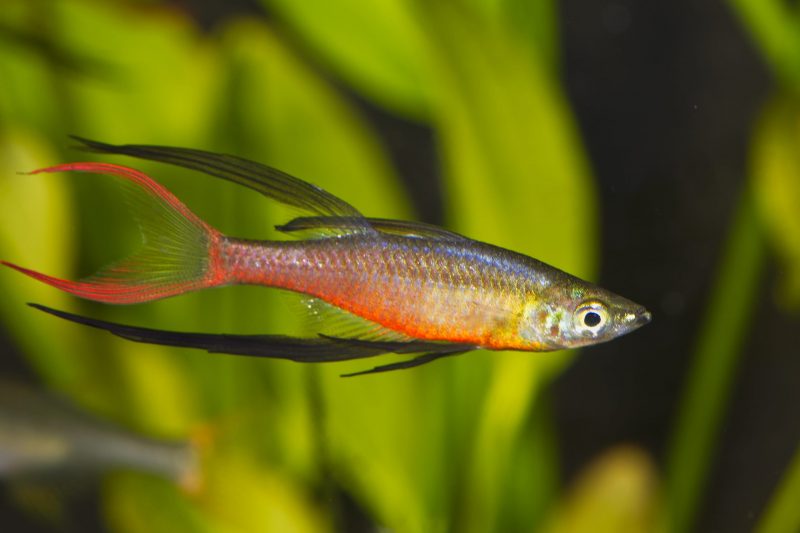
| Scientific name: | Melanotaeniidae, among subfamilies |
| Common names: | Rainbowfish, rainbow fish |
| Distribution: | Australia, Madagascar, New Guinea, Indonesia |
| Size: | 2.4–7.9 inches |
| Life expectancy: | 5–8 years |
| Color: | Variable, iridescent, rainbow hues |
| Diet: | Omnivore |
| Temperament: | Peaceful |
| Minimum tank size: | 15–30 gallons |
| Temperature: | 74–80°F (23–26°C) |
| pH: | 6.5–8.0 |
| Hardness: | 10–20 dGH |
| Care level: | Easy |
| Breeding: | Egg scatterers |
Origin
Rainbowfish are native to Australia, Madagascar, New Guinea, and Indonesia.
Some rainbowfish species, such as the red rainbowfish (Glossolepis incisus), live in densely vegetated rivers and lakes. Others, like the Madagascan rainbowfish (Bedotia madagascariensis), prefer clear, dimly-lit streams.
There are many rainbowfish subfamilies, including Bedotiinae, Melanotaeniiae, and Pseudomugilinae. Most rainbowfish tolerate a range of water conditions, and are accustomed to fast-moving, hard water.
Rainbowfish are common in the wild. However, some species of rainbowfish are considered endangered by the International Union for Conservation of Nature (IUCN). These include the daintree rainbowfish, yapen rainbowfish, slender rainbowfish, and longspined rainbowfish.
Adult Size & Lifespan
A rainbowfish’s life expectancy varies. Most rainbowfish have a lifespan between five and eight years, but the Madagascan rainbowfish can live for up to eleven years in captivity. Small rainbowfish have shorter lifespans than large rainbowfish.
The threadfin, celebes, and forktail rainbowfish all have life expectancies under five years. A well-maintained aquarium helps rainbowfish live long lives.
The average mature rainbowfish measures between three and six inches, but some species, like the neon rainbowfish, are smaller than three inches. The largest known rainbowfish is the Van Heurn’s rainbowfish, which grows up to 7.9 inches in length. Female rainbowfish are normally plumper than males.
Availability
Availability and price depend on the rainbowfish species. Most rainbowfish are easy to find in pet stores across the world and cost between $7 and $18 per fish on average.
Certain rainbowfish species, like the red rainbowfish, can cost up to $40. You can find rainbowfish online at Arizona Gardens, LiveAquaria, and Aquatic Arts.
Appearance & Behavior
Rainbowfish are easily recognizable because of their iridescent and colorful looks. Rainbowfish are peaceful, social, and get along well with most fish.
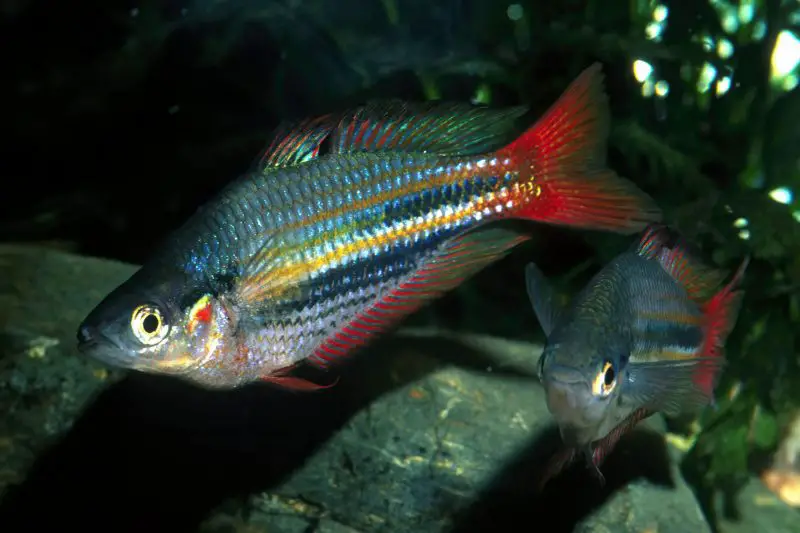
Colors, Patterns, Fins, and Sex Differences
Rainbowfish come in several colors and shapes. The most common rainbowfish species have pink bellies, red fins, and bluey-green bodies. Their eyes are large, and their scales are iridescent and change color depending on the lighting. Coloration loss indicates sickness or stress.
Rainbowfish have two dorsal fins and gain their beautiful, vibrant coloration as they grow. Male rainbowfish are brighter than females and develop a courtship stripe during spawning. In some rainbowfish species, males have longer and more pointed fins than females.
Here are the defining characteristics of some popular rainbowfish species:
- Banded rainbowfish: Deep body shape with dark lateral band and colorful, red fins. Grows up to six inches long.
- Boesemani rainbowfish: Bicolored, with cool tones at the head and warm tones like orange near the tail. Flat, oval body shape. Grows up to 4.5 inches in length.
- Celebes rainbowfish: Translucent with two different-sized dorsal fins and a slender body shape. The largest dorsal fin has a yellow tint. Male celebes have needle-shaped extensions from fins. Grows up to 3.2 inches long.
- Madagascar rainbowfish: Streamlined body with iridescent, silver scales. Yellow fins and tail. Grows up to 5.9 inches long.
- Neon rainbowfish: Oval, vibrant blue body and colorful fins. Females have yellow fins whereas males have red fins. Grows up to 3.2 inches long.
- Red rainbowfish: Gets its name from its bright, red scales. Red rainbowfish have rounded backs. Grows up to six inches in length.
- Threadfin rainbowfish: Faint vertical stripes across body and long, colorful fins. Scales are silver with notes of blue and orange. Grows up to 1.6 inches long.
Typical Behavior
Rainbowfish are peaceful, active, and social fish that are best kept in schools of six or more. Most rainbows occupy the middle and top levels of the aquarium.
Rainbowfish are fast swimmers and enjoy swimming against the current. While rarely aggressive, male rainbowfish become territorial during spawning. Keep the tank spacious to prevent fighting and aggression between males.
These fish retreat to hiding spots or try to jump out of the tank when stressed. Certain species are timid, especially if not kept in schools.
Rainbowfish Care & Tank Requirements
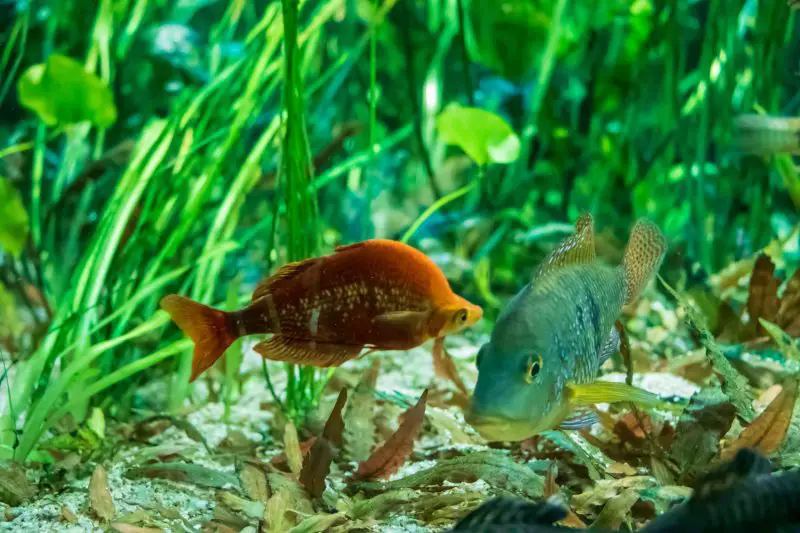
Rainbowfish are easy to care for because they’re hardy, peaceful, and can tolerate a range of water conditions. Rainbows thrive in schools of six or more and should be housed in a tank that mimics their natural environment in the wild. These fish are omnivores. Feed rainbows a varied, nutrient-rich diet.
Habitat and Tank Requirements
Rainbowfish are found in various places in the wild, meaning each species is accustomed to different conditions. Some rainbows live in brackish, shaded water, while others prefer fast-moving, pure freshwater streams.
With that said, 80% of rainbowfish live in New Guinea, where they inhabit waters that are hard, warm, and densely vegetated.
Tank Conditions
Ideal tank conditions for rainbowfish include the following:
| Water type: | Freshwater, with regular partial water changes (25–30%) to keep water clean and stable Signs of poor water conditions include dull coloration, erratic swimming patterns, and loss of appetite |
| Tank size: | A 15-gallon elongated tank can accommodate six small rainbows. Rainbowfish species larger than 3 inches should be kept in a 30-gallon tank at least Increase tank size by 2 gallons per additional small rainbowfish, or by 5 gallons per additional large rainbowfish |
| Water temperature: | 74–80°F (23–26°C) is suitable for most rainbowfish species |
| Substrate: | A dark, sandy substrate brings out the best coloration. Rainbows accustomed to brackish water benefit from a substrate with bogwood or roots |
| Tank setup: | Plenty of open space with hiding spots set up throughout the tank. Create hiding spots with vegetation, rocks, and caves. Ensure tank has a tight-fitting lid because rainbowfish are jumpers |
| Acidity: | Opt for a pH between 6.5 and 8.0 |
| Water hardness: | Moderately hard water, between 9–20 dGH |
| Filter: | A filtration system that generates a strong current helps replicate the fish’s natural habitat. A high quality canister filter is ideal In densely-vegetated tanks, use powerheads to assist with water movement Check filter regularly for blockages |
| Bubbler: | Not necessary |
| Lighting: | Subdued lighting, with some shaded areas. Create shaded spots with floating plants Provide moderate lighting for a couple of hours during the morning. Color-enhancing lights bring out the fish’s coloration |
| Plants: | Dense planting helps rainbowfish feel safe and secure. Small-leaved, hardy plants are ideal, such as java moss, java fern, and wisteria Most rainbowfish rarely uproot or eat live plants |
Test water regularly to ensure there isn’t a buildup of ammonia or nitrates. While rainbowfish are hardy, most can’t tolerate water fluctuations. Use a heater to maintain the correct temperature if the room gets cool.
Disease
Rainbowfish are prone to fin rot, velvet, and Ich. You can prevent these freshwater diseases by ensuring water parameters remain stable. Other preventable measures include reducing stressors, quarantining new fish for two weeks, and feeding fish a nutrient-rich diet.
Fin Rot
Fin rot is caused by poor water conditions or exposure to fish who harbor the disease. Symptoms include frayed fins, changes in fin coloration, and inflammation. Fin rot can eventually cause fins to decay and fall off. Treat fin rot with antibiotics.
Velvet
Velvet is a disease caused by the parasite Oödinium. Symptoms include a velvety, rusty-colored film on the skin, rapid gilling, lethargy, and flashing, where the fish scratches its body against rough surfaces. As velvet progresses, the fish’s skin peels off.
Treat velvet by gradually raising water temperatures by a few degrees and keeping light to a minimum. The best treatment is copper sulfate. Treat for 10 days. Velvet is highly contagious so infected fish should be quarantined immediately.
Ich
Ich is a disease caused by the parasite Ichthyophthirius multifiliis. White spots form on the fish’s gills and skin. Other signs of ich include appetite loss, flashing, breathing difficulties, and unusual hiding behavior.
Quarantine fish with ich and treat by increasing water temperature by a few degrees. Ensure water is clean and well-maintained.
Tank Mates
Rainbowfish get along with their own kind and thrive in schools of six or more. Different species of rainbowfish can be housed together, as long as the fish are similar in size. A ratio of 3:2 (females to males) helps reduce aggression.
Docile and hardy, rainbowfish should be housed in community tanks with equally peaceful species. Rainbowfish occupy the middle and top of the tank, so these fish shouldn’t cause problems for bottom-dwelling species. Ideal tank mates for rainbowfish include:
- Angelfish
- Barbs
- Corydoras catfish
- Danios
- Mollies
- Platies
- Plecos
- Rasboras (peaceful species)
- Swordtails
- Tetras
Rainbowfish are fast swimmers and shouldn’t be housed with timid, slow-swimming fish. Other species to avoid include aggressive fish such as bettas and cichlids. You shouldn’t keep rainbows with long fins, such as threadfins, with fin nippers.
Diet and Feeding
Rainbowfish are omnivores. In the wild, rainbowfish eat mosquito larvae, insects, small crustaceans, and zooplankton. Feed rainbowfish a protein-rich diet that predominantly consists of high-quality flakes and pellets.
The occasional live food — two to three times per week — brings out the best coloration in rainbowfish. Acceptable live food options include bloodworms, glassworms, daphnia, and mosquito larvae.
Feed rainbowfish three times a day. Keep portion sizes small. Rainbowfish should only be fed what they can consume within three minutes. Avoid sinking foods, as rainbowfish prefer to eat at the surface. Remove leftovers to prevent waste buildup.
Breeding
Rainbowfish are egg scatterers. Most rainbowfish species are easy to breed, but a separate breeding tank increases the survivability of baby fish (fry). Some rainbowfish species prefer to spawn in pairs, while other rainbowfish do best in groups.
Keep rainbowfish in a species-specific tank if breeding is a main goal. Otherwise, rainbowfish can crossbreed with other species and cause stunted and discolored fry.
Keep the following tips in mind when breeding rainbowfish:
- Set up a shallow, 5–10 gallon breeding tank. The optimal water conditions depend on the rainbowfish species, but a temperature of 77–80°F and a pH level of 7.5 are ideal for most species.
- Condition a rainbowfish pair by feeding live food and slowly raising water temperature by a few degrees. Water must be well-maintained for spawning to occur.
- Add Java moss and spawning mops near the bottom of the tank to catch the eggs. Spawning mops are breeding tools designed to stimulate live, bushy plants.
- Signs of courting behavior include the male gaining more coloration and swimming rapidly in front of the female. Some rainbowfish species develop a visible lateral stripe, known as a courtship stripe.
- Female rainbowfish become plump when ready for spawning.
- Rainbowfish spawning occurs during the evening or early morning. A female rainbowfish deposits between 5 and 30 eggs per batch.
- Remove the parents from the breeding tank once the process is finished because rainbowfish often eat the eggs.
- Feed free-swimming fry infusoria, then move the fry onto newly-hatched brine shrimp after a week.
Should You Get a Rainbowfish for Your Aquarium?
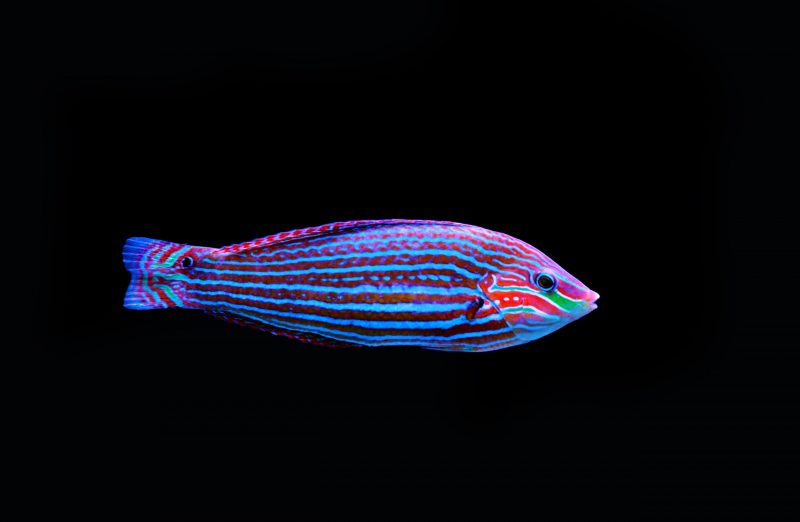
Rainbowfish are peaceful fish that enjoy the company of their own kind. You should get rainbowfish if you have a suitable tank size for the particular rainbowfish species you wish to purchase.
These fish are easy to care for, but some species are particularly sensitive to water fluctuations. Monitor water parameters closely. In an optimal tank setup, rainbowfish are beautiful fish that bring the tank to life with their captivating, iridescent looks.

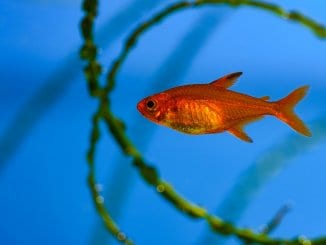
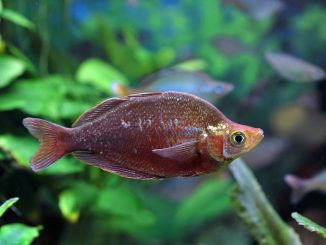
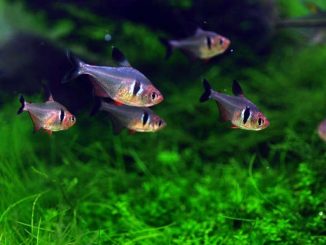
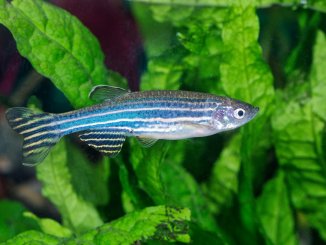
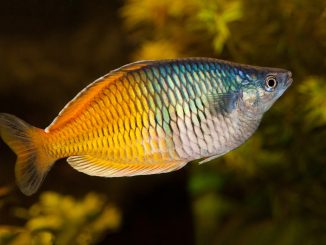
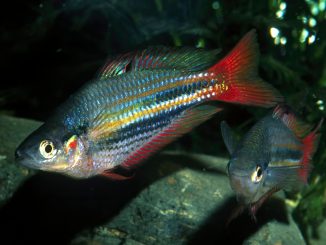
Be the first to comment